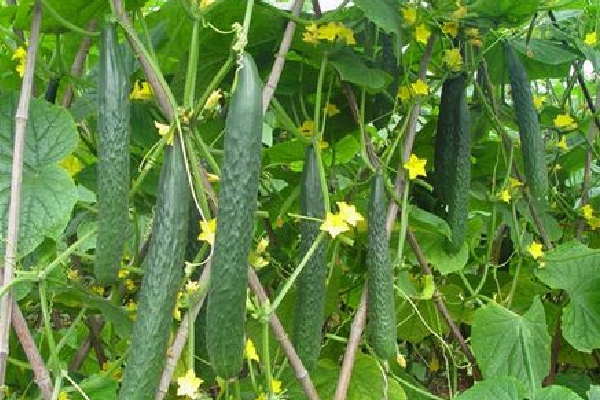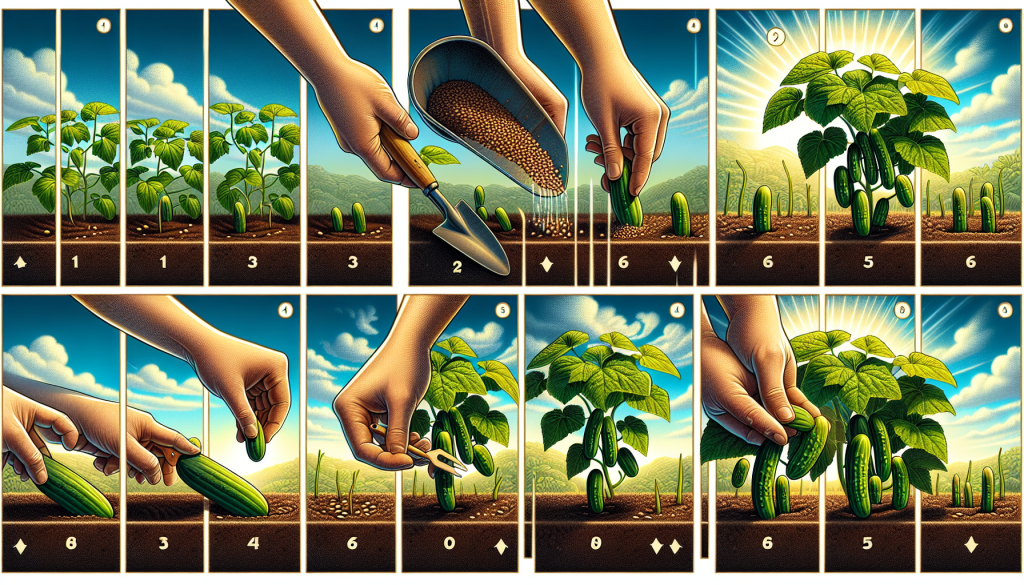All Posts
How to Plant Cucumbers
Cucumbers are a tropical vegetable and are relatively easy to cultivate, thriving in warm weather with ample water. Planting cucumbers requires a warm climate; the plants are sensitive to frost and should not be introduced to the garden until the soil temperature reliably reaches within the 70-degree range for at least 2 weeks after the last frost date.
Cucumber plants grow in two forms: vining and bush. Vining varieties trail along the ground or climb on trellises, while bush types, such as the Picklebush hybrid, form more compact plants. Generally, vining cucumbers produce more fruits throughout the growing season. Bush varieties are particularly suitable for containers and small gardens. You can increase the yield of bush varieties this season by planting multiple crops at two-week intervals.
Quick Guide to Planting Cucumbers:
Plant cucumbers when the daily average temperature reaches around 70 degrees Fahrenheit.
Space cucumber plants 36 to 60 inches apart (12 inches for bush varieties) in an area with ample sunlight, fertile soil, good drainage, and a pH range of 6.0 to 6.8.
Improve native soil by incorporating several inches of well-rotted compost or other organic matter.
Cucumbers require approximately one inch of water per week. Ensure they receive consistent moisture.
Feed plants regularly with water-soluble plant food to maximize your crop.
When the soil warms, add a layer of straw mulch to keep the fruits clean and help deter slugs and beetles.
Harvest cucumbers when they are large enough to eat.
Use straw mulch to deter slugs and beetles and to keep the fruits clean.
How and When to Plant Cucumbers
Cucumbers are planted in the spring. You can either directly sow them in the garden or start seeds indoors in pots about 4 weeks before transplanting. It’s advisable to do this in cooler weather, allowing you to get a head start on the growing season. To ensure seed germination, the ideal soil temperature is around 70 degrees Fahrenheit. Cucumber seeds won’t sprout in soil temperatures below 50 degrees Fahrenheit. Plant the seeds about 1/2 inch deep, placing 2 seeds every foot or in 4-inch pots. For potted seedlings, keep only one seedling per pot and cut the other seedling at soil level.
Indoor-started seedlings need ample light to prevent them from becoming leggy. If you don’t have south or west-facing windows, place them under a grow light. Gradually expose the seedlings to outdoor conditions after the last frost, and transplant them when nighttime temperatures consistently stay above 55 degrees.
Space transplants 1 foot apart or thin directly sown plants accordingly.
Soil and Care:
Cucumbers thrive in warm, fertile soil with a pH range of 6.0 to 6.8, although they can tolerate alkaline soil up to 7.6. To enhance the soil and create a root-friendly environment for a bountiful harvest, use several inches of soil enriched with well-rotted compost or composted manure at the top few inches of the existing garden soil. Space the plants 36 to 60 inches apart for vines, depending on the variety, and 1 foot apart for bush types. For vines trained on a trellis, space the plants 1 foot apart.
In regions with long and cool springs, you can warm the soil by covering hills or rows with black plastic, increasing the temperature by 3 to 4 degrees. If you’re not using black plastic, cover the soil shortly after planting with pine straw, wheat straw, chopped leaves, or your preferred organic mulch. If the weather remains unusually cool, you may wait a while before covering until the ground is warmed by the sun. Mulching is crucial for maintaining fruit cleanliness, especially for bush and vining types not grown on trellises. Straw mulch is also considered uncomfortable for slugs and creates an unfavorable foothold for cucumber beetles, aiding in their prevention.
If possible, use cucumber support to hold your cucumber vines. This helps keep the fruits clean and saves space. A cage with a diameter of 12 to 18 inches made from 4- or 5-foot lengths of wire fencing or hog wire can support 2 or 3 vines. As the plants grow, cucumber tendrils easily grasp onto the wire.
Cucumbers grow rapidly and require minimal care. Just keep the soil consistently moist, providing about one inch of water per week (more if temperatures are high and rainfall is scarce). Inconsistent watering may result in oddly shaped or poorly tasting fruits. If possible, water cucumbers using a soaker hose or drip irrigation to keep the leaves dry, preventing potential leaf diseases. This also helps in deterring slugs, as wet leaves are uncomfortable for them. Regular feeding with water-soluble plant food,applied directly around the plant stems, ensures both the plant and soil’s beneficial microbes are well-nourished. Alternatively, you can use slow-release fertilizers incorporated into the soil.

Pests and Propagate Problems
If vines flower but do not produce fruit, there may be interference with pollination. Ensure you see both male and female flowers. Male flowers typically appear first and then drop, so don’t panic if this happens. Female flowers will appear within one to two weeks, with a small cucumber-shaped swelling at the base that will develop into a cucumber. If you still don’t see these swellings turning into fruits, you may need to perform manual pollination.
Various pests can trouble cucumber plants. Squash bugs may attack young seedlings, while slugs prefer mature fruits. Aphids can settle on leaves and shoots. Applying straw mulch helps prevent slug infestations, and trellising the vines can lift fruits off the ground. Cucumber vines are also susceptible to cucumber beetles, which chew holes in leaves and flowers and leave scars on stems and fruits. The beetles can transmit a disease causing wilting and death of the plant. Powdery mildew is a disease leaving white, powdery-like patches on leaves. Apply fungicide at the first sign of its presence. To minimize disease spread, avoid harvesting or handling vines when leaves are wet.
Harvesting :
Cucumbers can be harvested as soon as they are large enough to use. Check vines daily as fruits start appearing, as they will enlarge rapidly. The more you harvest, the more fruits the vines will produce. To remove fruits, use a knife or scissors to cut the stem above the fruit. Avoid pulling them, as this may damage the vines. Don’t let cucumbers become overly large, as they can turn bitter and prevent further vine production. Harvest them when the bottom (blossom end) turns yellow, indicating overripeness; remove the fruit immediately. Harvest lemon cucumbers before they turn yellow. Although called lemon cucumbers because the small, oblong or round fruits turn yellow and resemble lemons, they might be a bit too seedy for most tastes when fully yellow.
You can store harvested cucumbers in the refrigerator for 7 to 10 days, but use them as soon as possible for the best flavor. If you don’t finish slicing cucumbers at once, cover the unused portion with plastic wrap to prevent dehydration in the refrigerator. In fact, it’s best to wrap the whole cucumber in plastic or store them in a zip-lock bag in the fridge to keep them crisp.

